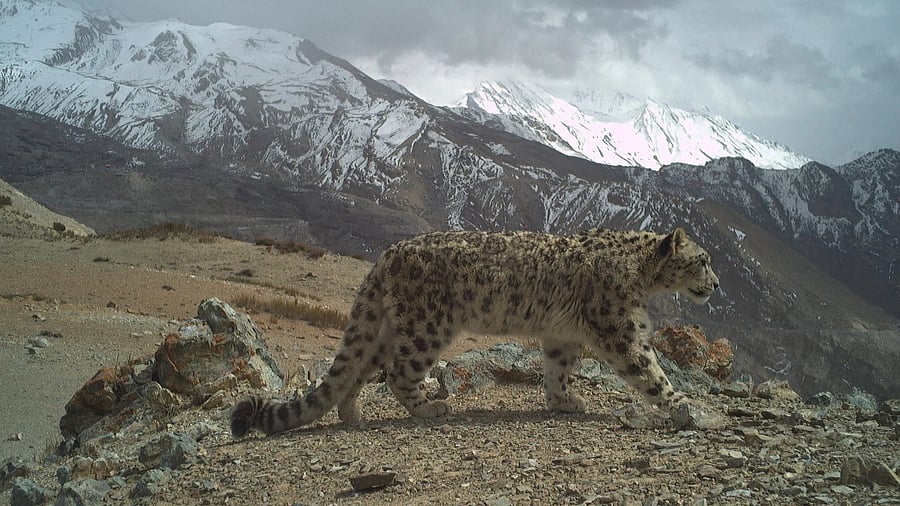
Mumbai: Eighty-three snow leopards have been estimated across Himachal Pradesh, with 44 unique adults detected in six representative sites, according to the second statewide snow-leopard population assessment conducted in Himachal Pradesh, confirming robust numbers of this keystone species across the state’s high-altitude landscapes.
The study was carried out by the Nature Conservation Foundation (NCF), supported by the Snow Leopard Trust (SLT) and Royal Enfield Social Mission in partnership with the Wildlife Wing of the Himachal Pradesh Forest Department, according to a statement.
Using large‑scale camera‑trapping across six representative sites of the 26,000-sq-km snow-leopard habitat, the survey detected 44 unique adult snow leopards, the same as in the 2021 assessment.
These individuals were photographed 262 times, leading to an estimated statewide population of 83 snow leopards (excluding cubs).
The snow-leopard density was found to range between 0.16 and 0.53 individuals per 100 sq km, with the trans-Himalayan regions of Spiti and Pin valley recording the highest density, followed by Upper Kinnaur and Tabo.
"The snow leopards in Himachal are under threat, and the Wildlife Wing of the Forest Department is playing a key role in their conservation. Many wild species are on the verge of extinction today, and the Wildlife Wing is taking important steps to protect them,” said Himachal Pradesh Chief Wildlife Warden Amitabh Gautam.
The scientific techniques deployed for the project followed the Snow Leopard Population Assessment of India (SPAI) protocol, developed by the Union Ministry of Environment, Forest, and Climate Change (MoEFCC), and aligned with the standards of the Global Snow Leopard Ecosystem Protection Program (GSLEP).
“The trans‑Himalayan region harbours some of the world’s most distinctive ecosystems, yet they remain exceptionally vulnerable to climate change,” noted NCF Programme Manager Deepshikha Sharma.
“This survey was completed in just one year, compared to three years for the previous one,” said Chief Conservator of Forests (Wildlife) Preeti Bhandari.
While most snow-leopard detections were recorded within protected areas such as the Kibber Wildlife Sanctuary, Great Himalayan National Park, Sechu Tuan Nala, and the Asrang Wildlife Sanctuaries, many were also found outside.
This underscored the vital role of local communities in safeguarding snow leopard habitats and highlighted the growing importance of community-based conservation across the state.
“Himachal Pradesh is one of the few provinces across the snow-leopard range that has transitioned from contributing to PAWS (Population Assessment of the World's Snow leopards) to CLAWS (Continuous Long-term Assessment of the World’s Snow leopards). As an apex predator, the snow leopard serves as a thermometer of its ecosystem’s health. Continuous monitoring of its population in this rapidly changing world is going to be crucial to detect and address threats to an entire ecosystem,” said GSLEP Executive Director Dr Koustubh Sharma.
